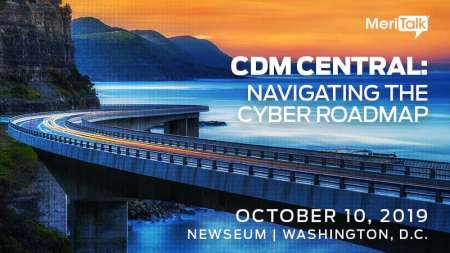While data may be the new oil for many applications, it has long represented the life-blood for critical network security architectures. How that data is gathered from network assets, then propelled up the security stack for analysis and then back down in the form of high-value intelligence can be the crucial determinant in effective security against determined adversaries.
Kevin Cox, Program Manager for the Department of Homeland Security’s Continuous Diagnostics and Mitigation (CDM) Program, sat down with MeriTalk in June to talk about a range of new and ongoing program activities that are vital to improving Federal agency security. High on that list is the program’s recently signed deal for new CDM Dashboard infrastructure that will boost both the flow and utility of vital security data streams.

With the new dashboard contract in place, and work continuing on other key objectives, Cox expressed confidence that the program is on the right course. (For a CDM program primer, take a look here then click here for a wider discussion of recent program activities.)
MeriTalk: Kevin, your office announced a contract in May for a new CDM dashboard ecosystem. Can you tell us about that and what advantages it will bring?
Cox: The new dashboard contract is expanding out the existing dashboard model of taking data from network sensors and feeding it up to agency dashboards, so the agencies have detailed information about their environments and vulnerabilities they need to address.
What the new contract is going to allow us to do is to plug in digital capabilities to the CDM data integration layer, including business intelligence, analytics, more comprehensive presentation layers, etc. It’s what we call our dashboard ecosystem. It’s a modular environment that expands out the use of the data for the agencies. But we are also expanding out the types of productivity tools that can be plugged into the data to help provide greater value to both the agencies as well as federal leadership.
MeriTalk: You mentioned recently that the infrastructure on the prior dashboard contract had some problems handling big amounts of data including from agencies that have a lot of components. The new dashboard is more robust?
Cox: Throughout the program, with all of our new task orders, we looked at our lessons learned from the prior efforts, and really wanted to use those lessons learned to address the challenges and help make the program as optimal as possible. So as you mentioned, with the amount of data that we have seen coming up from the CDM sensors, there was a higher volume than originally anticipated so we were running into some performance issues and some scalability issues.
And we really needed to address both those areas, as well as expand overall value for the customers, and capabilities for the customers. So we’ve worked to address all of that. And again, by focusing on the data integration layer, taking the data up from sensors, making that scalable, making sure that it is performing at the highest level, we’ve worked to address those two challenges, and use the lessons learned. And then by being able to include additional capabilities like improved analytics, like business intelligence, we are really expanding the services and capabilities that are available to the agencies.
MeriTalk: And the real bottom line on this is that more information from the sensors goes further up to the agencies, further up to DHS, to the NCCIC, and then it flows back down, right?
Cox: Yeah, the aim is to get more info up to the agencies. The model will remain the same, where we are summarizing the data up to the Federal dashboard, for federal leadership including the National Cybersecurity & Communications Integration Center (NCCIC). The aim is really to expand out for the agencies what they can do with the data, the details of the data that they have available, so they really get a full understanding of what their environment looks like, what specific high-value assets look like, and really expand out value for those agencies.
MeriTalk: How are things looking for the CDM Program Office finishing up the current fiscal year and going into the next?
Cox: We’re on a good track right now. We’ve got new task orders in place for all of the cabinet-level agencies, we’re working to expand out the shared service platform. And then we’ve got the new dashboard contract in place. We’ve really taken the lessons learned from our prior work. We’ve had a number of successes. And we’re working to address those areas where there are challenges, like we talked about with the dashboard, where we ended up with more data volume and needed to be able to scale more quickly and boost performance. I think we are really headed in the right direction.
